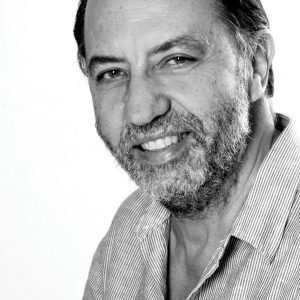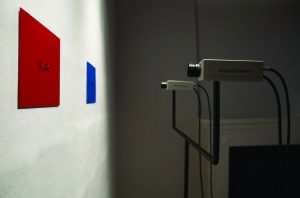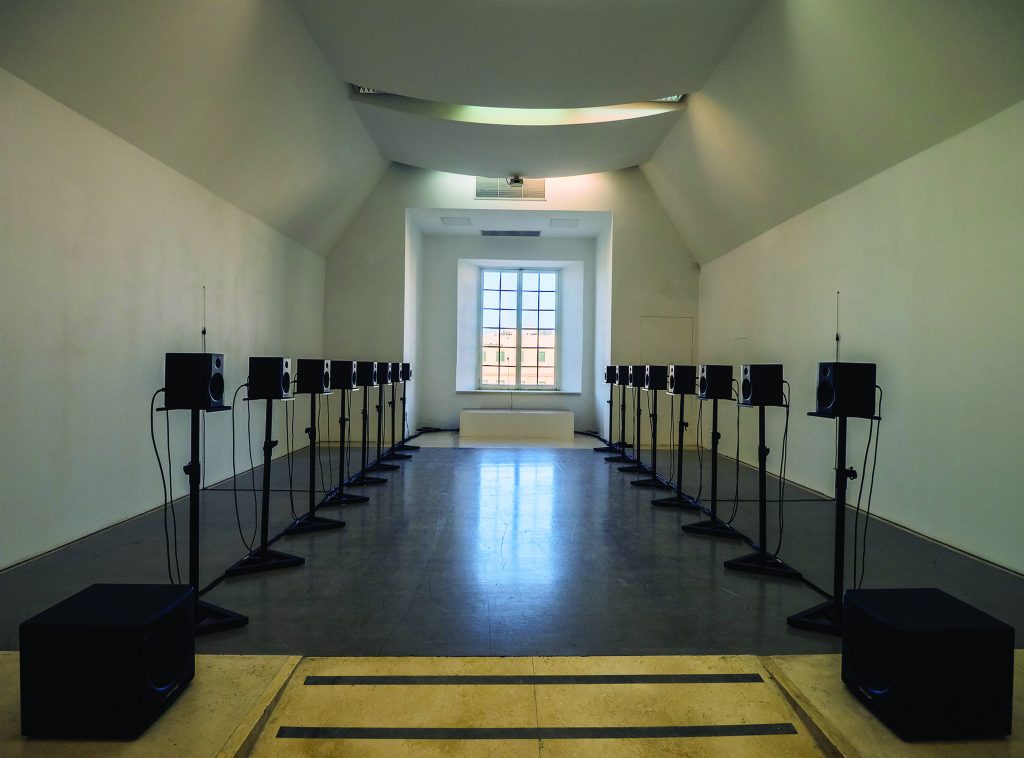My work centres on the co-existence of dualities. It treads blurred borders and investigates uncertain divides between opposing poles. It synthesises extremities and acts as a seam that binds together disparate realities.
Uncertain of its own actuality, it questions its own being.
Artist statement
Prof. Vince Briffa peels back the layers of his latest works to reveal his thoughts on duality, confrontation and caricaturisation and how he translates them into art.
There are two sides to every question, exactly opposite to each other,’ wrote Diogenes Laertius when quoting Protagoras in Lives and Opinions of Eminent Philosophers. This makes us consider human nature’s propensity of thinking in dichotomies.

Our tendency is to divide humanity and its traits into stereotypical pairings: ‘us and them’, ‘good and bad’, ‘love and hate’. But this does away with the rich profusion of shades of grey within a spectrum which is bound by a further concocted ideological construct for determining what is extreme black or pure white. How does one define colour in absolute terms?
The epigraph, taken from my artist statement, provides the anchor that underpins my practice. This duality acknowledges the sundering ‘wasteland’ in-between as an opportunity for unshackling, rather than a constraining threat, opening up the work to questioning. It also allows the work to embrace the many truths bound by dogmatic extremities, even to the point of representing the same confronting polarities’ flagrant absurdity through caricature.
This ongoing preoccupation with the in-between has dominated my work for years, but has become more evident in the last decade. In 2011 I showed an exhibition of drawing-paintings, photography, and video fittingly entitled Terrain Vague, at the upper galleries of Spazju Kreattiv, St James Cavalier in Valletta. My most recent body of installation art work, which I collectively refer to as the caricaturisation of confrontation, seeks to reflect on and further deconstruct this condition.
Nar-Nir (for AB) was the first work created in this series. Its modest, modernist aesthetic, together with its silent presence belies the fact that this work thrives on continuous surveillance—CCTV cameras endlessly inspect the two immovable panels of colour. Due to the lack of movement on the two monitors facing the audience, the distressing intimidation normally felt when one is under Big Brother’s scrutiny is revoked. The work is a comment on our inclination to gravitate towards extremes, particularly zoning in on the Malta’s strong political divide of red and blue. Through what can be poetically described as a mediatic silencing, switching from colour to grayscale, the work becomes a metaphor for how both extremes are indistinguishable when reduced to their fundamental monotone. Like the impossibility of holding a private conversation in a noisy room, the installation’s constraining framework drowns the colourful attributes Nar and Nir (respectively, the absolute adjectives of the red and blue colours in the Maltese language) in voiceless obscurity by divesting them of their dominant characteristic—the vibrancy of their hue. Nar-Nir turns us into colour-blind observers, depriving us of all meaning and neutering all cultural colouring that has taken civilisations millennia to garner.

Nar-Nir (for AB) also acts on an art historical level by referencing post-war conceptual artist Alighiero Boetti’s (AB) concern with colour and language structures in his body of work I Colori (1972), similarly appropriating the typical material criteria of the new redefinition of art, particularly sculpture and installation of the 1960s. The work mimics the material reconditioning of Boetti’s work through a similar use of pre-fabricated lettering, commercial signage, plastic panels, and automotive paint, albeit to arrive at a different meaning. I Colori’s original intention was to redefine colour through meaning extracted from contemporary society’s cultural artefacts as commodity fetishism—the collective belief that it is natural and inevitable to measure the value of useful things with money. Alternately, Nar-Nir exposes the quiet depletion of the not-so-commonly used colloquial superlative adjectives through draining of colour, in order to represent the unwary impoverishment of the Maltese language.
The second work in the caricaturisation of confrontation series is the interactive sound sculpture Paned Window (Min hu barra, barra u min hu ġewwa, ġewwa), a site-specific work based on research in three-dimensional audio interaction and agency. The work was funded by the University of Malta’s Research, Innovation and Development Trust and shown between December 2017 and February 2018 in an exhibition entitled White Memory – 1989/2018 Art in Malta and Poland, curated by Marinella Paderni and Irene Biolchini.

Similar to Nar-Nir, the installation is driven by constant monitoring, this time of the gallery walls’ vibrations and their source, as experienced through the window pane of the gallery that looks out onto Valletta’s main thoroughfare. The result is a complex real-time translation into sound, expressed through an array of eighteen speakers that confront each other. Viewers walk within the space and not only experience the space’s reaction to their movement, but also contribute to the everchanging soundscape through their very presence.
On a conceptual level, the window metaphor has been central to the history of art, from Leon Battista Alberti’s use of the analogy with the emergence of linear perspective in the early 1400s, to today’s multi-dimensional ‘window’ arrangement that permits navigation of the non-Euclidean realms of cyberspace. The window also physically separates the outside from the inside. As Anne Friedberg tells us, ‘it opens, it closes; it separates the spaces of here and there, inside and outside, in front of and behind.’ Its thin pane of glass gives us hope, and provides us with a (sometimes false) sense of security.
Like the soft shafts of light painted by Vermeer, or the dappled pools of light entering the magnificent stained glass windows of Chartres Cathedral, the work upsets the feigned stability of the inside-out distinction. It exists by feeding equally on the casual and the causal activities happening both within the walls of the gallery as well as in the public space of the city outside it. Paned Window also acts as an metaphor for the disconnection between the art world and everyone else. Despite the persistent carelessness these two worlds have for one another, their overlapping complexities would fade into complete silence if this fragile stability is disrupted. Perhaps the frailty of the glass pane can never really dampen the pain of separation except in the safety of our passive memories.
“Perhaps the work also acts at a more playful level, questioning the ultimate destination of language, symbolised by our own speech.”
A third interactive installation is still a work in progress. In a way, it synthesises the other two works through its use of sound and language. Fomm ir-Riħ, composed of four speakers confronting four wind fans, is a work in collaboration with philosopher and curator Dr Clive Żammit. The project presents a dynamic dialogue between four artists and four curators, in response to four writings by main curator Niki Young.
Similar to Nar-Nir and Paned Window, Fomm ir-Riħ is pitched at multiple conceptual engagement levels; its aesthetic separates the two main components of the spoken word.
The sound and the wind confronts them, revisiting the divine notion of the word as the breath of life. The work also challenges the power of the word and plays on the way we conceive confrontation. Perhaps the work also acts at a more playful level, questioning the ultimate destination of language, symbolised by our own speech. Playing with the science behind this issue, it questions: ‘If our spoken word, as sound waves, are reflected, refracted and ultimately decay, having their energy dissipated as heat, what happens to this heat when they are met with a cooling fan that is activated every time a word or phrase is uttered?’
Fomm ir-Riħ will be shown at an exhibition entitled Metafourisms, at Spazju Kreattiv in Valletta in May 2018.
Read more: Frieberg, A., The Virtual Window: From Alberti to Microsoft, MIT Press, 2009http://researchtrustmalta.eu/blog/three-dimensional-audio




Comments are closed for this article!